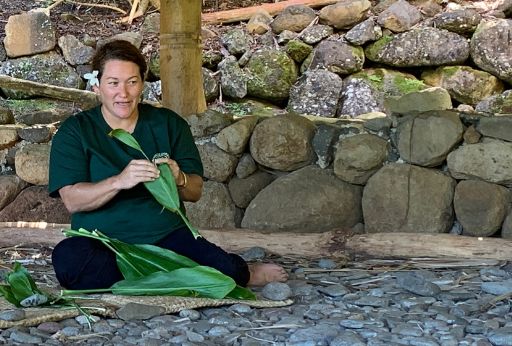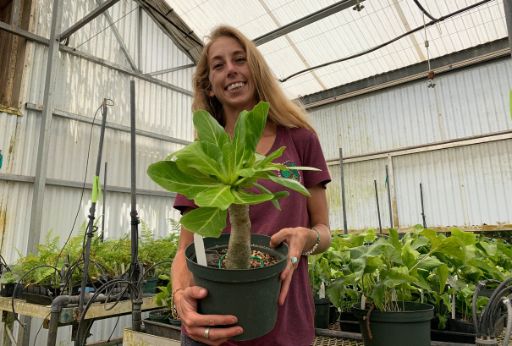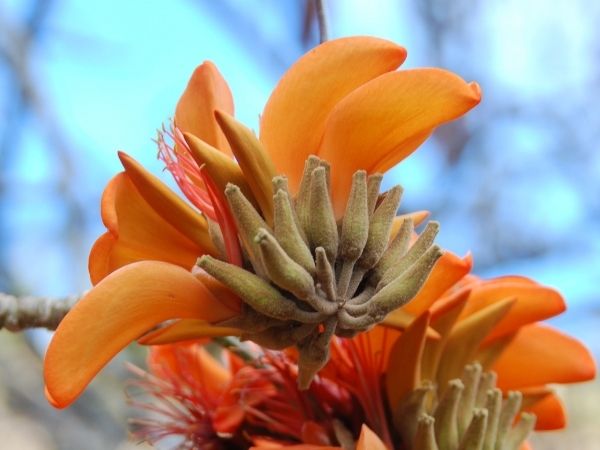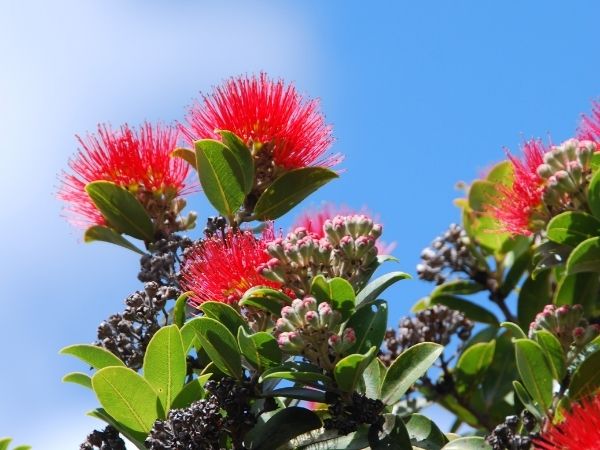Tropical Plant Database - Plant Details
Codiaeum variegatum
Click on any heading above to view more information about this plant
Conservation Status
- IUCN: least concern
- USFWS: None
Family: EUPHORBIACEAE
Genus: Codiaeum
Species: variegatum
Species Author: (L.) Rumph. ex A. Juss.
Vernacular: Kesuk - Palauan [Balick 4387], Kurodong - Pohnpeian [Sohl 74]
Synonyms: Croton variegatus L.
Genus: Codiaeum
Species: variegatum
Species Author: (L.) Rumph. ex A. Juss.
Vernacular: Kesuk - Palauan [Balick 4387], Kurodong - Pohnpeian [Sohl 74]
Synonyms: Croton variegatus L.
Croton has glossy, leathery leaves that are very variable in shape, highly colored and variegated. The leaves can be ovate or linear and variegated with pink, orange, green, brown, yellow and white. In addition the plant may change color as it matures. The plant produces hardly noticeable star-shaped yellow flowers that in long racemes. The cut stems bleed a sap that is poisonous.
(Watson, L., and Dallwitz, M. J. 1992. The Families of Flowering Plants: Descriptions,Illustrations, Identification, and Information Retrieval.)
(Powell, Charles C. and Vining Donald M. 1984. Ortho’s Complete Guide to Successful Houseplants.)
(Watson, L., and Dallwitz, M. J. 1992. The Families of Flowering Plants: Descriptions,Illustrations, Identification, and Information Retrieval.)
(Powell, Charles C. and Vining Donald M. 1984. Ortho’s Complete Guide to Successful Houseplants.)
The bark, roots, latex and leaves are poisonous, containing the toxin called 5-deoxyingenol. Chewing the bark and roots is said to cause burning of the mouth. The latex has caused eczema in some gardeners after repeated exposure.
(Powell, Charles C. and Vining Donald M. 1984. Ortho’s Complete Guide to Successful Houseplants.)
(Powell, Charles C. and Vining Donald M. 1984. Ortho’s Complete Guide to Successful Houseplants.)
Croton is an exotic looking plant that is grown in warm greenhouses or conservatory or as a houseplant.
(Powell, Charles C. and Vining Donald M. 1984. Ortho’s Complete Guide to Successful Houseplants.)
(Information for this species compiled and recorded by Camelia Cirnaru, NTBG Consultant.)
(Powell, Charles C. and Vining Donald M. 1984. Ortho’s Complete Guide to Successful Houseplants.)
(Information for this species compiled and recorded by Camelia Cirnaru, NTBG Consultant.)
- 094740 - collected by C. G. Lloyd in 0001
- 067437 - collected by F. R. Fosberg in 1950
- 005116 - collected by W. M. Bush in 1977
- 095613 - collected by Derral Herbst in 1984
- 005115 - collected by Joel Lau in 1985
- 006216 - collected by Tim Flynn in 1989
- 002988 - collected by Art Whistler in 1989
- 027543 - collected by David H. Lorence in 1992
- 014595 - collected by Tim Flynn in 1993
- 014578 - collected by Tim Flynn in 1993
- 038770 - collected by F. Sohl in 2001
- 039527 - collected by Steve Perlman in 2003
- 039365 - collected by David H. Lorence in 2003
- 039815 - collected by Steve Perlman in 2003
- 039857 - collected by Liloa Dunn in 2003
- 040847 - collected by Liloa Dunn in 2003
- 041007 - collected by Liloa Dunn in 2003
- 043735 - collected by E. Albert Amor in 2004
- 043468 - collected by Francisca Sohl in 2004
- 087499 - collected by Francisca Sohl in 2004
- 042454 - collected by Hank Oppenheimer in 2004
- 051216 - collected by Michael J. Balick in 2007
- 051677 - collected by David H. Lorence in 2009
- 069526 - collected by Jesse Adams in 2013
- 093428 - collected by Gregory M. Plunkett in 2016
- 093611 - collected by Gregory M. Plunkett in 2017
- 093936 - collected by Gregory M. Plunkett in 2019
- 094515 - collected by Elliot Gardner in 2022
We currently have 28 herbarium specimens for Codiaeum variegatum in our collection. Click on any specimen below to view the herbarium sheet data.
.svg)











